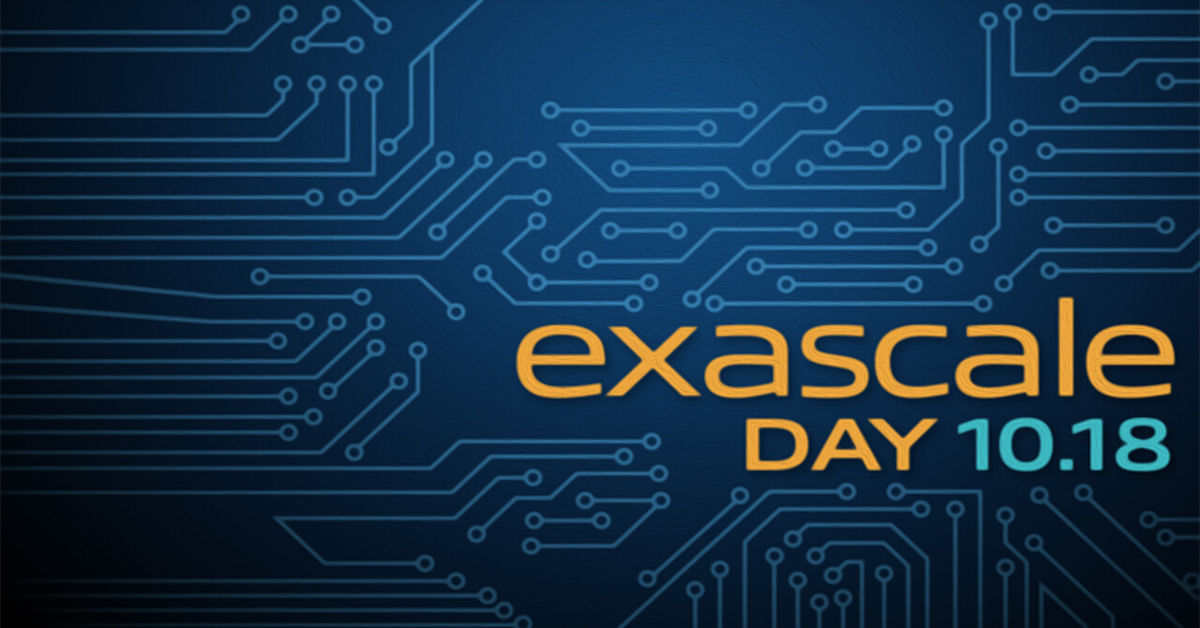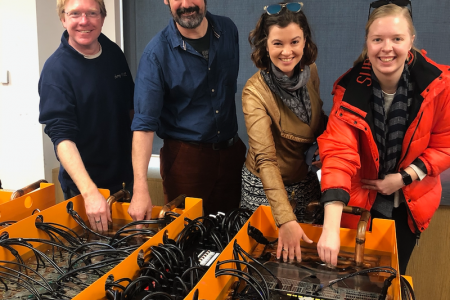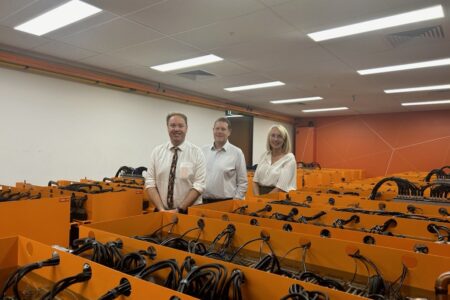Just as the world of quantum computing is taking major leaps forward, the realm of traditional supercomputing is also charging full speed ahead!
Oct 18 (10/18) is National Exascale day – a day to celebrate the scientists and researchers who make breakthrough discoveries in medicine, material science, energy and beyond with the help of exascale supercomputers.
These ultra-fast computers are capable of performing a billion billion (10^18), or a quintillion, computing operations per second. That’s a whopping EIGHTEEN zer000000000000000000s!
Not only will this next level of high-performance computing (HPC) hasten the discovery of solutions to problems we face today, but it will also reveal questions we haven’t yet thought to ask.
Turbocharging modern scientific endeavours.
Many scientific avenues will benefit from the advent of exascale computing. Bioinformatics and drug discovery are among them. Supercomputing is already playing a vital role in preparing vaccines to conquer COVID-19, and the use of ultra-fast computers in formulating precision medicine will only proliferate over time. Researchers use HPC systems to filter drugs for pre-clinical trials and to predict the efficacy of various treatments. With exascale computing, bioinformaticians can also perform high-throughput genome sequencing more rapidly to predict future pandemics.
Extreme weather prediction is another area where exascale computers can make a huge impact. For instance, weather forecasters can better predict where a hurricane will hit land – from within 300 kilometres 50 years ago to just 80 kilometres today. The advent of exascale speed will enable future climate modelling software to be even more accurate at predicting natural catastrophes, allowing quicker human response and limiting economic loss.
With exascale computers capable of crunching astro-data at high speeds, astronomers are set to get a sharper pair of eyes too. The world’s largest and most complex radio telescope, the Square Kilometre Array (SKA), will arrive just in time for exascale supercomputers to pick up the mountains of data the telescopes will generate – approximately 700 petabytes each year. DUG is also proud to have contributed supercomputing brains and brawn to ICRAR (International Centre for Radio Astronomy Research) scientists in their astronomy research using large amounts of data from the Murchison Widefield Array (precursor telescopes to the SKA). Coupled with exascale computing, this huge experiment will undoubtedly catalyse technology innovation for decades to come and transform the way we understand the formation and evolution of galaxies, fundamental physics and the origins of life.
Exciting developments in the exascale space.
Here are a couple of up and coming exascale supercomputers and some of their specifications.
Frontier (2021)
Aurora (2021)
- > 1 exaFLOP
- Intel Xeon Sapphire Rapids CPUs
- Intel Xe GPUs
- Consumes < 60 MW
El Capitan (2023)
- 2.0 exaFLOPS
- AMD Epyc Genoa CPUs
- Radeon Instinct GPUs
- Consumes < 40 MW
Sunway exascale system (2021)
- 1 exaFLOP
- Sunway SW26010 manycore CPUs
We’re excited to witness how the power of 18 zeros would change the world. Exascale supercomputing will empower scientists and researchers worldwide to tackle our toughest challenges and turbocharge us towards a brighter future.
Happy Exascale Day to all!




































